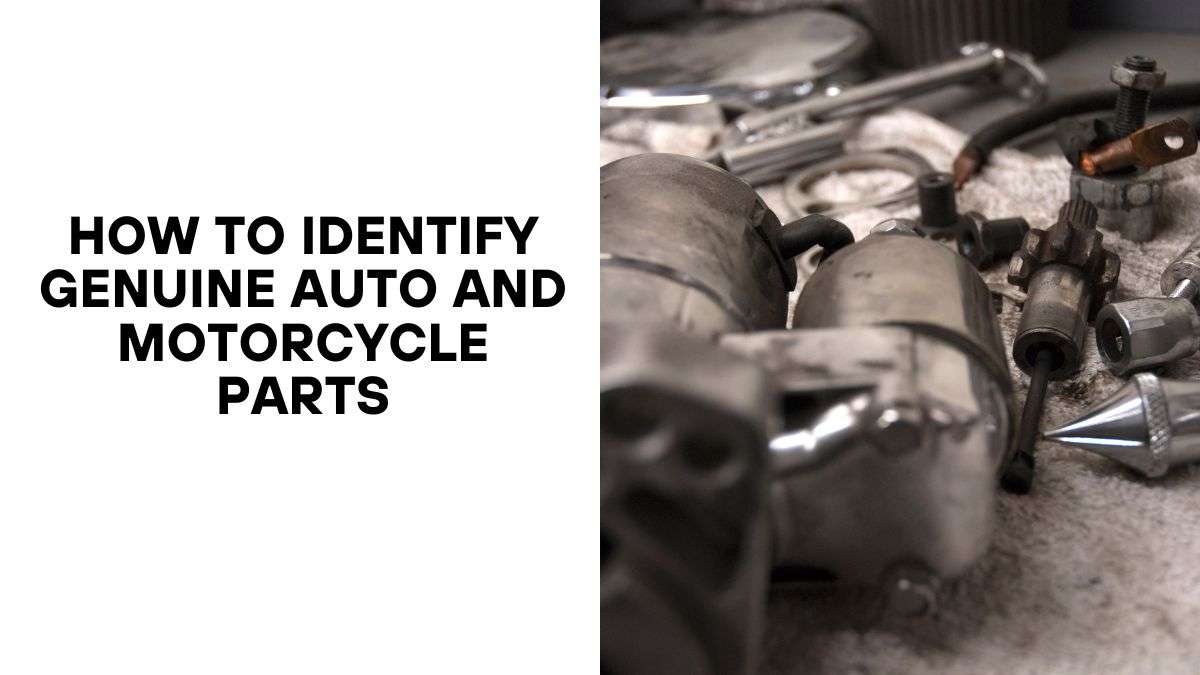
Jan 25,2024
In automobiles and motorcycles, the quality of parts can significantly affect safety, performance, and overall satisfaction. Genuine auto and motorcycle parts are designed to meet specific standards, ensuring your vehicle functions optimally and safely.
However, with a market flooded by counterfeit and substandard parts, it's essential to identify genuine ones to avoid potential risks. This tutorial will offer insightful information on differentiating authentic car and motorcycle parts from fake equivalents.
Before delving into the identification process, it's crucial to understand why using genuine parts is of utmost importance. Genuine parts are manufactured to meet the vehicle's manufacturer's exact specifications and quality standards. Here are a few reasons why they matter:
Genuine components are made to fit precisely and perform as intended through testing and design. Counterfeit parts can compromise safety by affecting the vehicle's stability, braking, and other critical systems.
Authentic parts are engineered to work seamlessly with the vehicle's components, providing the best performance and fuel efficiency. Counterfeit parts can hinder your vehicle's overall performance.
While genuine parts may seem more expensive upfront, they often outlast counterfeit alternatives, saving you money in the long run. Counterfeit parts may require frequent replacement, resulting in higher maintenance costs.
Now that we've established the importance of genuine auto and motorcycle parts let's explore how to identify them.
When searching for auto and motorcycle parts, start by conducting thorough research. Understand the specific part you need and its compatibility with your vehicle. This research will help you make informed decisions during the purchasing process.
To ensure you're buying genuine parts, it's essential to verify the authenticity of both the seller and the manufacturer. Here's how you can do it:
Genuine parts often bear the manufacturer's logo or branding prominently. Look for these indicators to ensure authenticity.
Many genuine parts have unique serial numbers or markings that can be cross-checked with the manufacturer's database. Counterfeit parts may lack these identifiers.
Observe how the pieces are labeled and packaged. Genuine parts usually come in well-designed, branded packaging with clear labeling.
Be cautious of deals that seem too good to be true. Counterfeit parts are often priced significantly lower than genuine ones.
To increase your chances of purchasing genuine auto and motorcycle parts, consider these reliable sources:
These establishments are known for selling authentic parts and often provide product warranties.
Seek out internet merchants who have a reputation for offering authentic parts. Examine ratings and reviews to determine their reputation.
Local stores with a trustworthy reputation in your community will likely sell genuine parts.
In your quest for genuine parts, be aware of common scams and red flags that can help you spot counterfeit products:
If the price seems too good to be true, it probably is. Counterfeit parts are often sold at a fraction of the cost of genuine ones.
Legitimate sellers provide contact information and responsive customer support. If these are absent, proceed with caution.
A lack of return or warranty policy indicates that the seller may not stand behind the authenticity of their products.
When purchasing auto and motorcycle parts, always retain essential documentation, including:
These documents provide proof of purchase and can be vital when seeking replacements or refunds.
Genuine parts often come with warranties. Keep these documents safe, as they can be used to claim warranty benefits.
Correspondence With The Seller
Save any email or chat conversations with the seller, as they can be used as evidence in disputes.
Different parts may require specific considerations when verifying authenticity. Here are some tips for identifying genuine parts in various categories:
Check for the manufacturer's branding on the brake pads and rotors and ensure they match your vehicle's specifications.
Genuine filters should have the manufacturer's logo and part number visible.
Look for the Department of Transportation (DOT) code on tires, which indicates their authenticity and manufacturing date.
When in doubt, get advice from a reliable mechanic or vehicle specialist. These professionals have the knowledge and experience to identify genuine parts and can guide you in your search.
In the world of auto and motorcycle parts, the choice between genuine and counterfeit can profoundly impact your vehicle's safety and performance, following the guidelines in this article, conducting thorough research, verifying sellers, and retaining documentation. You can lower the likelihood of receiving fake components considerably.
Remember, the quality of the parts you choose will determine your vehicle's longevity and safety. So always opt for genuine auto and motorcycle parts to keep your ride in top condition.